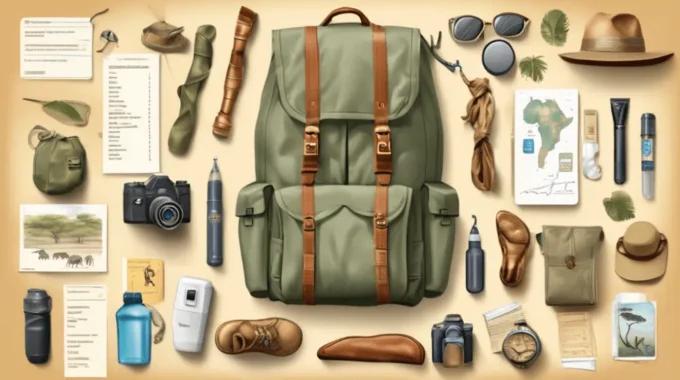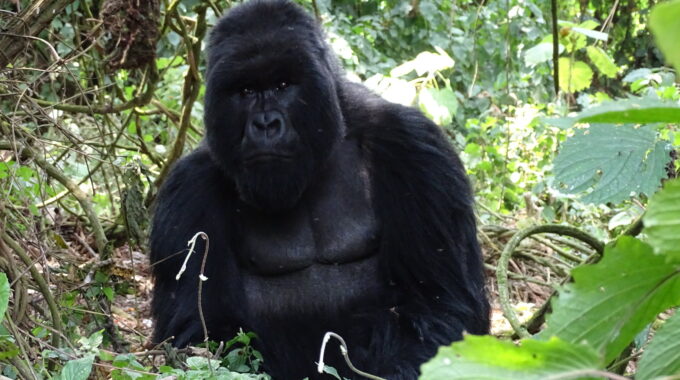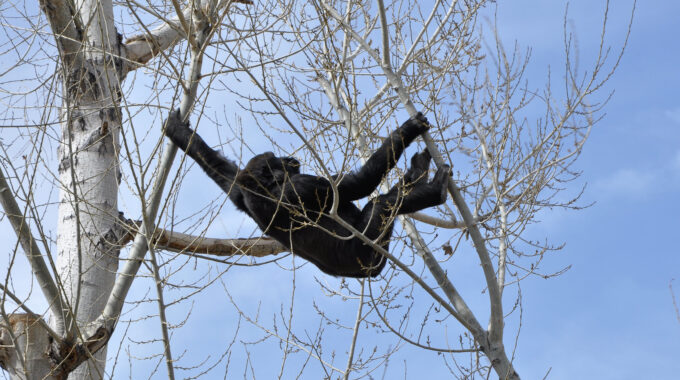10 Essentials Our Travel Experts Always Bring on Safari A safari is an exhilarating expedition. Rest…
Can you wear black gorilla trekking?
Can you wear black gorilla trekking? –
Gorilla trekking is an extraordinary adventure, but it requires careful preparation, including appropriate clothing. The right outfit enhances comfort, protects against the natural elements, and ensures minimal disturbance to the gorillas and their habitat. Below is a comprehensive guide to what you should wear, including why wearing black may not be the best choice.

Understanding the Trekking Environment
Gorilla trekking typically takes place in tropical rainforests like Bwindi Impenetrable National Park in Uganda or Volcanoes National Park in Rwanda. These areas are characterized by:
- Dense Vegetation: Thick forests with prickly plants and underbrush.
- Unpredictable Weather: Frequent rain, high humidity, and fluctuating temperatures.
- Wildlife: Presence of insects like mosquitoes and other animals.
- Steep and Uneven Terrain: Challenging trails that can be muddy and slippery.
Why Clothing Choice Matters
The clothing you wear on a gorilla trek serves several purposes:
- Protection: Against rain, insects, and plants that can scratch or irritate.
- Camouflage: Helps you blend with the environment, minimizing disturbance to wildlife.
- Comfort: Ensures you can trek for hours without discomfort.
Why Black May Not Be Ideal
While black clothing is often associated with professionalism and elegance, it has drawbacks for gorilla trekking:
- Heat Absorption: Black absorbs more heat, making it uncomfortable in humid conditions.
- Insect Attraction: Dark colors like black attract insects, especially mosquitoes.
- Visibility: Gorillas may perceive dark colors as a threat or associate them with predators, leading to unwanted attention.
Recommended Clothing Colors
- Earthy Tones: Olive green, khaki, and brown are ideal. These colors blend well with the natural environment and do not startle wildlife.
- Muted Shades: Avoid bright colors like red, yellow, or white, as these can attract insects and draw unnecessary attention.
Detailed Clothing Guide
- Shirts:
- Wear a long-sleeved, moisture-wicking shirt in a neutral color.
- Long sleeves protect your arms from scratches, insects, and the sun.
- Pants:
- Lightweight, breathable, and durable trekking pants in earthy tones.
- Tuck your pants into your socks to prevent ants or other insects from crawling in.
- Jackets:
- A lightweight waterproof jacket is essential for sudden rain showers.
- A jacket with a hood can provide extra protection.
- Footwear:
- Sturdy, waterproof hiking boots with good grip.
- Avoid sandals or sneakers as they lack the necessary support and protection.
- Headwear:
- A wide-brimmed hat or a cap protects against the sun and falling debris.
- Gloves:
- Gardening or trekking gloves shield your hands from thorny plants and muddy terrain.
- Gaiters:
- Optional but useful for extra protection against mud and insects.
- Socks:
- Thick, moisture-wicking socks to keep your feet dry and prevent blisters.
Other Essentials
- Backpack:
- Carry a waterproof backpack for essentials like water, snacks, and a camera.
- Insect Repellent:
- Use a repellent containing DEET to keep bugs at bay.
- Sunscreen and Sunglasses:
- Protect your skin and eyes from UV rays.
- Walking Stick:
- Provided by most tour operators, it helps with balance on steep trails.
Conclusion
Can you wear black gorilla trekking? When planning your gorilla trek, prioritize earthy, neutral-colored clothing to enhance comfort and ensure a harmonious interaction with the environment and wildlife. While black might seem like a versatile choice, its potential to attract heat and insects, as well as its impact on wildlife perception, makes it less suitable for this activity. By dressing appropriately, you can fully immerse yourself in this once-in-a-lifetime experience while respecting the delicate ecosystem of the gorillas.



